Old School Gamer Celebrates Mother’s Day By Honoring the Late-Great First Lady of Gaming, Rieko Kodama.
The pack-in title for the Sega Genesis in North America, Altered Beast is one of the most iconic and noticeable titles in the console’s history. Even if you were a fan of Sega’s 16-bit console or not, the words “Rise From Your Grave,” “Power Up” and the scream the game’s main character makes upon his death are synonymous with the era. Although Sonic the Hedgehog would eventually overtake it as the pack-in title for the console and become the official mascot for the brand moving forward, the success of Altered Beast was important for Sega as it firmly established them as different from Nintendo. There were no Italian plumbers or ducks on their consoles. Instead, there were transforming Greek Champions, who killed zombies and the ruler of the Underworld, Neff. Make no mistake, this was the birth of “Sega Does What Nintendon’t.”
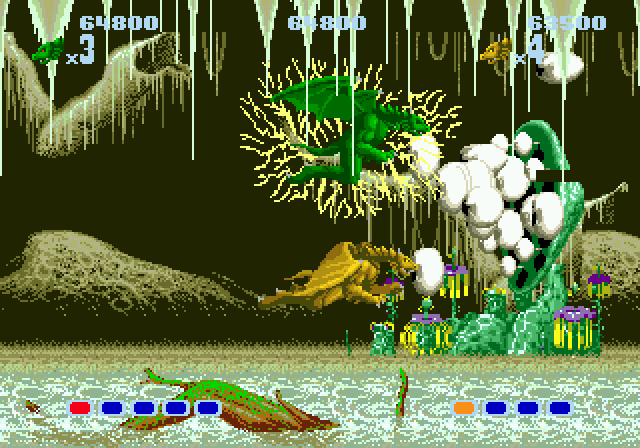
The birth and development of Altered Beast however didn’t take place on the Genesis, as it originally was an arcade game. Designed by Makota Uchida for the arcade, the Genesis version was ported/designed by Rieko Kodama, AKA Phoenix Rie- and a team of developers at Sega. Although later known for her work on the Sonic the Hedgehog, Shinobi and Castle of Illusion and of course, the Phantasy Star franchise, in 1988, Kodama wasn’t quite the Queen of the RPG genre that the world knows her as today, yet. Although she had proven herself as an Executive Designer on the original Phantasy Star on the Master System, the Altered Beast port was literally a different type of animal for her and one that tested her skills.
Luckily for Kodama, she found a place in Sega that catered to her artistic needs and asked her to grow as a developer. According to the developer, Sega was a progressive workplace where she felt comfortable. This allowed her to develop her skills at a rapid pace. At the same time, she understood her work on the port was much different than the work that went into the arcade version of Altered Beast. “Since I was working on consumer version porting, I wasn’t actually a member of ‘Team Shinobi,’ which was led by Uchida-san,” Kodama said. “When I started out at SEGA, there were actually other female graphic designers who were my seniors and other female colleagues as well. I wasn’t the only woman at the company, so I didn’t face much hardship in that sense. This isn’t an ‘as a woman’ perspective, but I did have to create graphics based on varying world views, so I would say that was very challenging, especially since the art style in gaming was of science fiction and fantasy, which I never really touched on during my school days. I purchased some H.R. Giger and Advanced Dungeons & Dragons art books released in the West to study.”
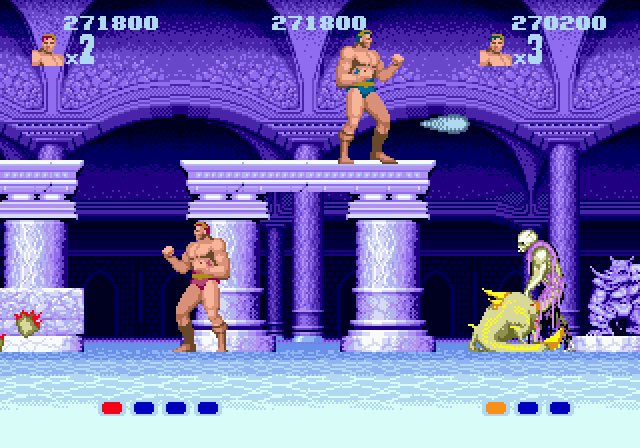
The influence of Western art and culture influenced Kodama greatly, as well as a love of classic games such as Space Invaders, Pac-Man and Xevious, but art had always been a part of her life. Adapting to what was needed to be a success in the video game industry was a different challenge for Kodama however. With no clear blueprint on how to work in the field, Kodama credits Sega for giving her the tools she needed to develop her talents.
“I attended a graphic design school, but instead of continuing into the advertising field, I wanted to be a product creator, so entered the video game industry, which was a new occupational field during the time,” Kodama said. “Even so, I didn’t understand the nitty-gritty of how to design game graphics or anything, so I learned everything after I joined SEGA.”
The learning process was still occurring at the time of the Altered Beast port, a game tied extremely close to the console’s success in North America as its initial pack-in title. Although she had a Graphic Design credit on Champion Boxing as well as character designs on Alex Kidd in Miracle World and Quartet and lesser-known RPGs such as SpellCaster and Black Onyx on her resume by the time she got to work on Altered Beast, her workload on the Sega Genesis title was intense for a variety of reasons.
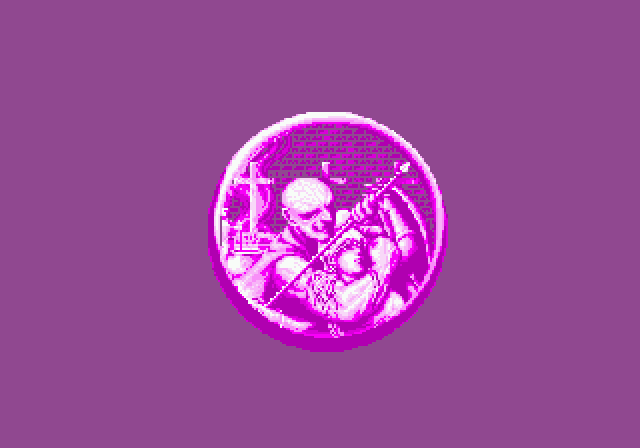
Despite her relative youth, however, her work was already being noticed thanks to an Executive Design credit on Sega’s Master System landmark RPG, Phantasy Star. Kodama’s work there was proof that if anyone could get out the port quickly and without fail, it was her. “For Altered Beast, I worked on porting it from the arcade version to the Mega Drive (Sega Genesis in North America),” Kodama said. “I was in charge of all the background images and I recall having to complete the porting process in a very short amount of time.”
While Kodama herself doesn’t remember how long the development cycle was for the Sega Genesis port of Altered Beast, what hasn’t been lost on her was the sense of responsibility she and the rest of the team had on the title considering the relative youth of the console. The team needed to make a splash in spite of everything. “It was a new hardware release and there was talk about including Altered Beast as a bundle, so I don’t remember the exact time period we had to work with for this title, but I recall it being quite short,” Kodama said. “The graphic designs at the time didn’t allow for large file size limits, so they were created with a compact team in a short period, but I remember it being much shorter than other titles. Since it was new hardware, it was our first time making color selections and it was a busy time trying to remake the game to accommodate the Mega Drive’s parallax scrolling, so there definitely was a deadline to make it in time for bundling. The graphic designs are finalized first, so I think the programmers had a really tough time.”
It didn’t help the team either that the arcade and the Genesis were two completely extremely unique platforms, capable of very different end results. For starters, the Genesis version of Altered Beast doesn’t feature as robust visuals or sound (compare the trademark “Rise From Your Grave” and “Welcome to Your Doom” phrases and in the game and you’ll instantly hear a difference) as the arcade version. At the same time, the game still features the trademark beat-em-up gameplay with enough enemies on screen to keep the player busy, thanks to solid parallax-scrolling which keeps the brisk arcade-feel intact. The depth in the game’s ending and credits were no simple task on the Genesis either. Feeling like the end of a movie with movie screens, this element wasn’t reproduced on other versions of the game released on different consoles. With all of these trade-offs, in place, it would have been too easy for Altered Beast to fall off the rails. Kodama understood however how important it was try and preserve the soul of the original game. She tried her best to recreate the initial arcade vision on the Genesis. Kodama admits that it was never easy though. Sega’s high standards, ones learned after Atari’s falters years before when bringing arcade hits to home consoles in the United States made the situation one that had high expectations as well.
“One of the selling points of SEGA’s consumer hardware was that you can play arcade games, so naturally, most of the arcade games got ported,” Kodama said. “At that time, arcades were very high-tech and were moving toward a different dimension from consumer hardware, so porting arcade games proved to be quite the challenge. I imagined people would think the gaming experience was quite different if they played the original arcade version first.
“For the backgrounds I created, the number of colors available on the arcade board and the Mega Drive varied significantly. While the arcade board had an abundance of available colors, the Mega Drive had fewer options I could work with, so the output was quite different. Also, since the Mega Drive had limitations on what could be displayed on a single screen in terms of characters, the number of enemies, size and more. We had to get creative. Our goal was to make the game feel as close to the original arcade version as possible.”
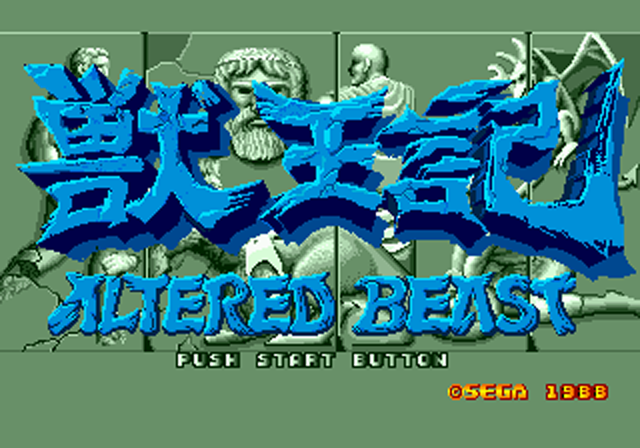
In spite of those sacrifices, Kodama is proud of what the team was able to accomplish, as well as the memories it’s given gamers of all shapes and sizes for over 30 years. While Altered Beast was ported to a litany of other consoles over the years, including the Amiga, Commodore 64, NES, Atari ST and PlayStation 3, among several others, none get the fanfare of the Genesis port. For many gamers, Sega’s attempt to bring the arcade action home was a mission accomplished.
Despite being created in Japan, originally for the Japanese market, Altered Beast ended up a bigger success in the United States, making its legacy an especially interesting one. Bundled in with at least 1.4 million Genesis/Mega Drive consoles in North America and Europe, its impact on the Sega 16-bit brand is huge. Although eventually replaced by Sonic the Hedgehog as the pack-in game for the Genesis in North America and Europe, its legacy as a fun and faithful port make it one of the bigger cult classics in Sega’s history. For Kodama, that’s something to be proud of.
“We made it in a very short period of time, but it was packed in with the hardware, so I think a lot of people were able to play it,” Kodama said. “At least to the point that I get interviewed about it even now.”

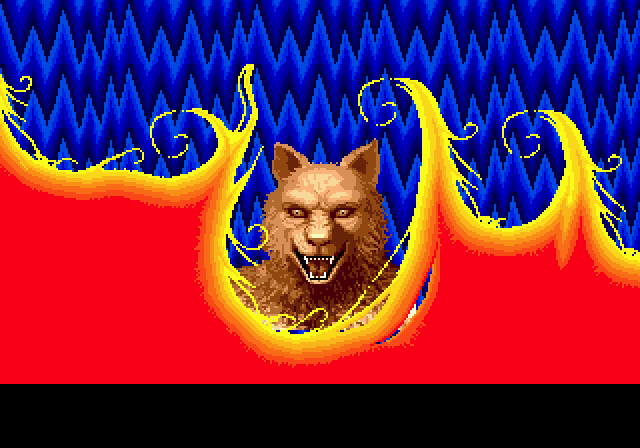



You must be logged in to post a comment.